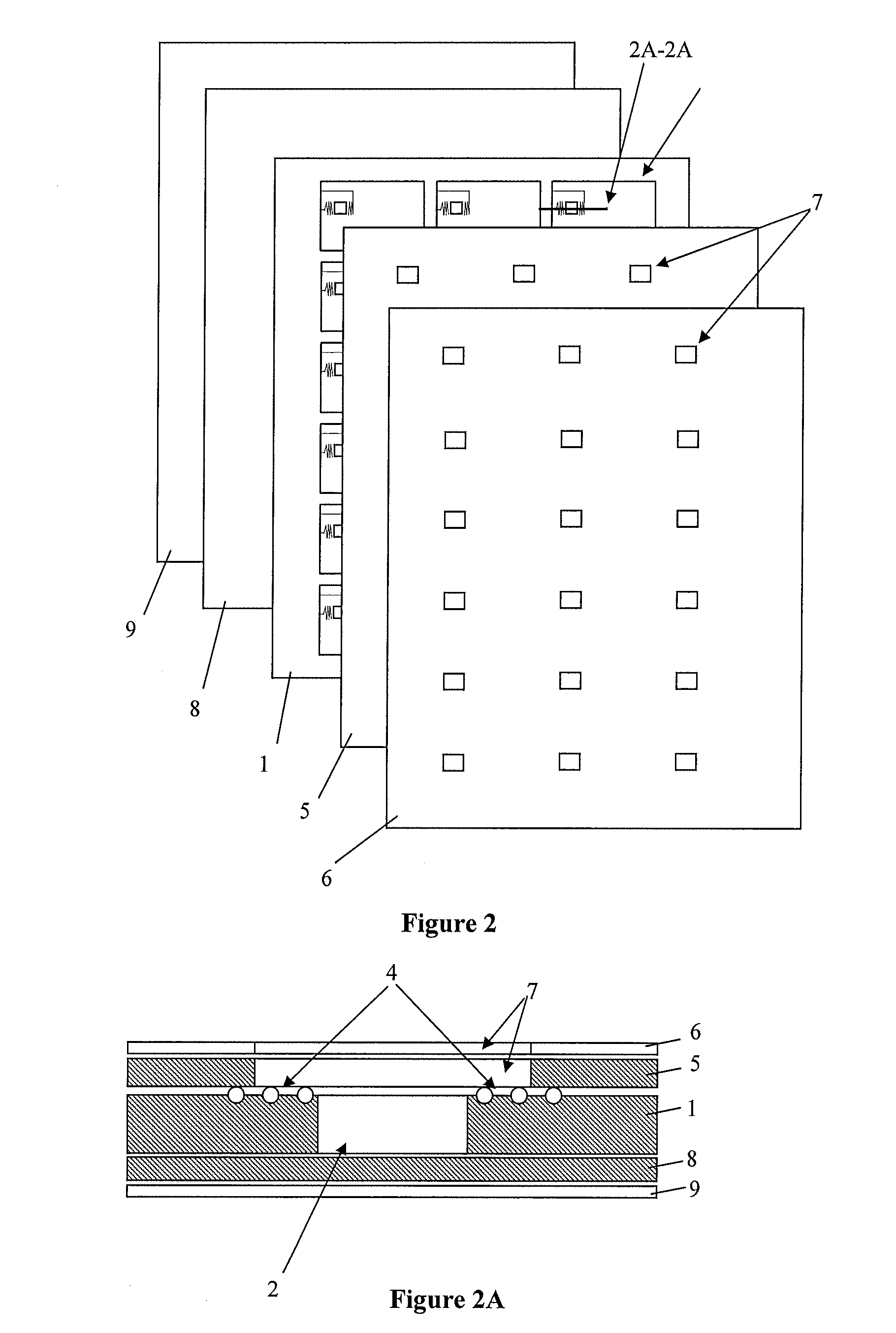Manufacturing method for a card and card obtained by said method
a manufacturing method and card technology, applied in the field of cards, can solve the problems of internal mechanical stress, delamination, deformation of cards, and inability to make milling steps, and achieve the effect of improving the process of making chip cards
- Summary
- Abstract
- Description
- Claims
- Application Information
AI Technical Summary
Benefits of technology
Problems solved by technology
Method used
Image
Examples
Embodiment Construction
[0048]FIG. 1 shows an initial step of the process. A sheet or layer of material 1 is punched according to the top size of the module (described in more detail further down in the present specification) to form openings 2 in the layer 1. Typically, said sheet 1 comprises several openings 2 punched in a matrix like arrangement of lines and columns in order to be able to fabricate several cards at the same time with the same piece. Once the cards have been built, the sheets will be cut into individual cards.
[0049]The thickness of this sheet 1 will be higher than the thickness of the glob top protection associated with the module.
[0050]This material can be PVC, PC, or any other common plastic used in the smart card industry. As said, this sheet, also called format, will support several dual interface card locations in a matrix-like arrangement.
[0051]FIG. 1A shows a partial cross section of the opening 2. This cross-section corresponds for example to the opening that is placed on the top...
PUM
| Property | Measurement | Unit |
|---|---|---|
| Temperature | aaaaa | aaaaa |
| Electrical conductor | aaaaa | aaaaa |
| Time | aaaaa | aaaaa |
Abstract
Description
Claims
Application Information
 Login to View More
Login to View More - R&D
- Intellectual Property
- Life Sciences
- Materials
- Tech Scout
- Unparalleled Data Quality
- Higher Quality Content
- 60% Fewer Hallucinations
Browse by: Latest US Patents, China's latest patents, Technical Efficacy Thesaurus, Application Domain, Technology Topic, Popular Technical Reports.
© 2025 PatSnap. All rights reserved.Legal|Privacy policy|Modern Slavery Act Transparency Statement|Sitemap|About US| Contact US: help@patsnap.com



